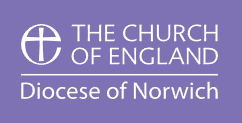A church visitor in 2005 wrote in the visitors’ book “The church is beautifully placed on the banks of the river, down a long grassy path beside a paddock from the village street. The horses seemed to be guarding it.â€
This perfectly describes the rural setting of our lovely church, which is usually open at all times. However, during the current pandemic the church is open from Thursday to Sunday only, and visitors are asked to use the hand sanitiser provided and to observe social distancing guidelines when appropriate.
Having its origins in the 13th century, the church has suffered many ‘restorations’, and was probably largely rebuilt around 1400.
It boasts an early 16th century octagonal font, a 17th century Swedish chest, and the plain communion table is of Stuart date.
The stained-glass windows commemorate various local families and Lords of the Manor from the 13th to the 19th century.
Two standards from the nearby former RAF station at Coltishall were presented to the church for safe-keeping and are mounted on the south wall of the chancel. These are of No 6 Squadron and No 54 (Fighter) Squadron; the former was formed on 31st January 1914 and had never been disbanded, making it the longest serving squadron in the Royal Air Force.
The fine Baroque organ was built by Benjamin Collins in 1845, originally for Scottow Church. From there it was removed to Scottow Hall, and it found its current resting place in 1944. The painting on the organ case was added to commemorate the end of World War II, and the decoration depicts St Michael slaying the serpent and St George overcoming the dragon, together with doves of peace, vines and grapes.
In 1998 the church was honoured by a private visit of Queen Elizabeth, the Queen Mother, who often visited a friend in Lammas. A commemoration of this can be found beside the main door.
A comprehensive Guide to the architecture, windows and memorials is available in the church. Parking is available next to the burial ground and can be accessed from The Street, Lammas, via wrought iron gates – a noticeboard and post box are adjacent to these.
